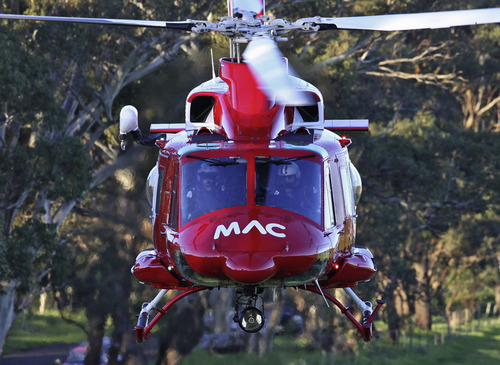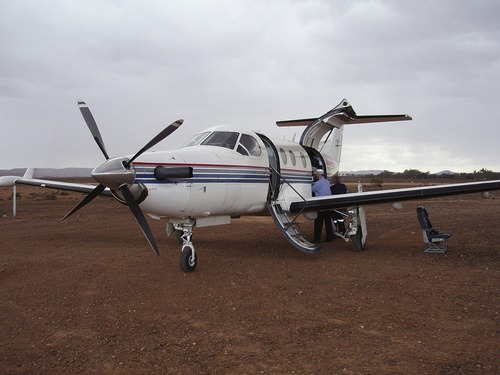CASE 24
 |
Incident
Following a fall from farm machinery, a 40-year-old female has intracranial haemorrhage and spinal injuries and requires retrieval from a general hospital. She is intubated and ventilated with the following ventilatory settings:
• Tidal volume 450 mL.
• RR 12 breaths per minute.
• Positive end expiratory pressure (PEEP) 5 cm H2O.
• Inspired oxygen 28%.
Clinical observations:
• P 85.
• BP 140/80 mmHg.
• SaO2 98%.
Relevant information
▪ Aircraft: Fixed-wing and rotary-wing aircraft available
▪ Local resources: One land ambulance
▪ Retrieval options: Specialist neurosurgical and spinal hospital 320 km (200 miles) away
▪ Other: Ambient conditions: Heavy rain 15°C (59°F)
Questions
24.1 Discuss the key points of flight physiology.
24.2 What are the key differences between fixed-wing and rotary-wing retrievals?
24.3 Which transport platform would you choose in this scenario?
Discussion
24.1 Gas expansion
Boyle’s Law, which relates to the expansion of gases, is the principal gas law to remember in the context of flight physiology. Essentially, gas will expand as altitude increases and atmospheric pressure decreases. As altitude decreases, the opposite occurs. Therefore, during an aeromedical evacuation, any gas in an enclosed space will try to expand. A change in altitude from sea level to 8000 feet (2500 metres) will expand an enclosed volume of gas by 35%. Relevant gas-filled structures that may be affected are listed in the box over the page. Slow changes in altitude can minimise the effects of gas expansion.
Hypoxia
The relevant gas law in this instance is Dalton’s Law. As altitude increases and atmospheric pressure decreases, the partial pressure of oxygen will fall at the alveolar interface unless supplemental oxygen is administered. A fall in alveolar oxygen partial pressure results in lower oxygen delivery to the tissues. Oxygen saturation for healthy
Physiological body spaces
• Middle ears.
• Facial sinuses.
• Stomach and intestine.
Pathological body spaces
• Pneumothoraces.
• Intracranial air.
• Surgical wounds.
• Dental caries.
• Intravascular bubbles (see Case 16).
Equipment
• Endotracheal tube cuffs.
< div class='tao-gold-member'>
Only gold members can continue reading. Log In or Register to continue
Stay updated, free articles. Join our Telegram channel

Full access? Get Clinical Tree









